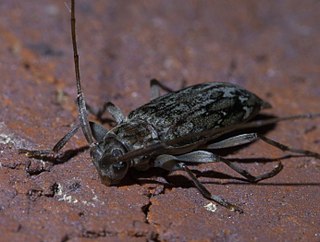| Leptocometes | |
|---|---|
 | |
| Leptocometes barbiscapus | |
| Scientific classification | |
| Kingdom: | |
| Phylum: | |
| Class: | |
| Order: | |
| Suborder: | |
| Family: | |
| Subfamily: | |
| Genus: | Leptocometes |
Leptocometes is a genus of beetles in the family Cerambycidae, containing the following species: [1]
- Leptocometes acutispinis (Bates, 1863)
- Leptocometes barbiscapus (Bates, 1872)
- Leptocometes hispidus Bates, 1881
- Leptocometes luneli (Chalumeau & Touroult, 2005)
- Leptocometes nubilus (Melzer, 1934)
- Leptocometes obscurus (Monné, 1990)
- Leptocometes pallidus (Melzer, 1934)
- Leptocometes penicillatus (Monné, 1990)
- Leptocometes spinipennis (Bates, 1885)
- Leptocometes spitzi (Melzer, 1934)
- Leptocometes umbrosus (Thomson, 1864)
- Leptocometes virescens (Melzer, 1931)
- Leptocometes volxemi (Lameere, 1884)
- Leptocometes zikani (Martins & Monné, 1974)









